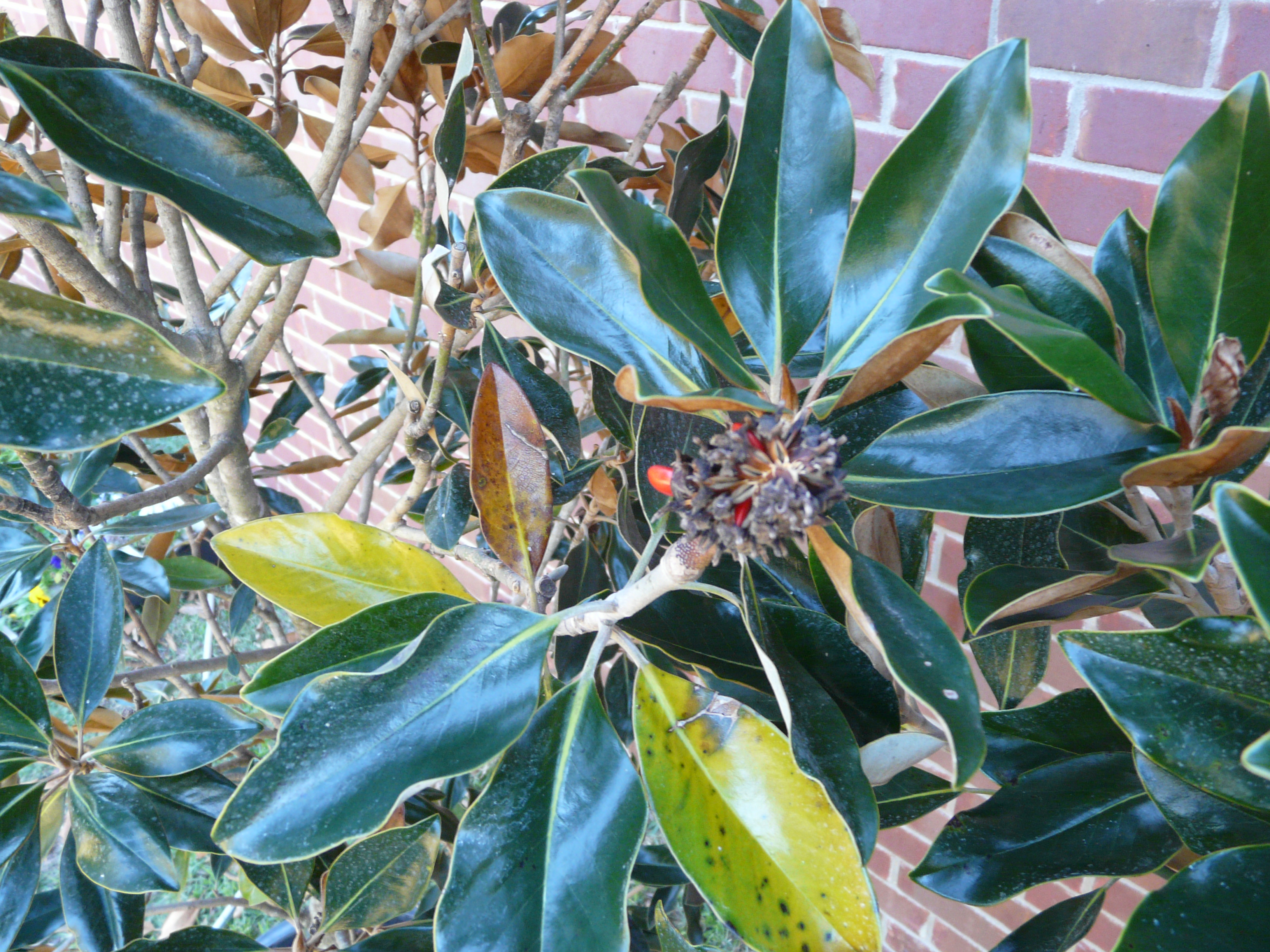
by Larry Williams | Nov 11, 2014
As the season changes, plants change as well. This is true in evergreen and deciduous trees and shrubs as well as our lawn grasses.
The cooler night temperatures and the shorter day length of fall result in changes in the physiology of many of our landscape plants and lawn grasses.
It’s common for azaleas to lose a few leaves now. These are the older leaves on the stem near the center of the plant. They turn reddish or yellow and drop from the plant. This is normal from now until spring. However, if the younger leaves, those nearest the tip of the shoot, turn yellow or brown there is cause for concern. Poor drainage, lack of water or alkaline soils may cause this condition.
Yellow leaves may appear on camellias, gardenias, cherry laurel and oleanders. Again, as with azaleas, these are the older leaves on the stem near the center of the plant. It’s normal for these leaves to drop from the plants now until spring. However, do not confuse scale damage on camellias for normal aging of leaves. Scale insects feed on the lower surface of camellia leaves causing them to become splotched with yellow.
Many of the leaves on sycamore trees have changed from green to brown. Although this phenomenon occurs every year, it’s not caused by a change in day length or temperature. This is not a true seasonal change. It’s the result of insects feeding on the leaves. By the time the damage is visible, there is little that can be done to correct the problem. However, the problem will take care of itself since sycamore trees will soon be dropping their leaves.
Lawn grasses also experience some seasonal changes. The growth rate of lawn grasses slows in the fall. Although this slowdown in growth means less mowing is required, it also means that lawns will not be as attractive as they were during spring and summer. Because of this reduced growth rate, grasses cannot produce enough new leaves to replace the leaves that are dying. The end result is a dull, yellow-green lawn.
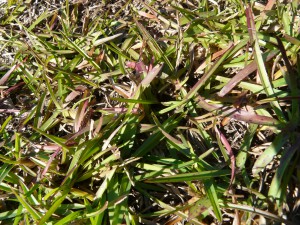
Normal seasonal color change in centipedegrass lawn from green to reddish purple.
Photo by Larry Williams, Okaloosa County Extension
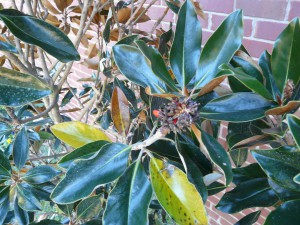
Normal seasonal color change on older ‘Little Gem’ Magnolia leaves. Photo by Larry Williams, Okaloosa County Extension
Numerous reddish-purple blades throughout the lawn may be visible now as well. Cooler temperatures, injury to the leaf blades from foot traffic, mowing equipment, vehicles, etc, can cause this. It also could be caused by lack of potassium or phosphorus but is more likely the result of cooler temperatures, especially if it did not show up until fall.
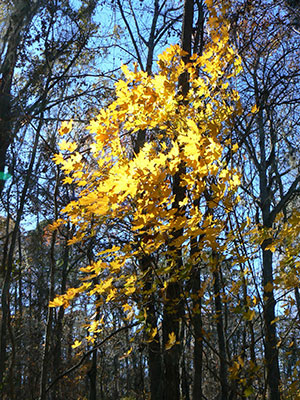
by Taylor Vandiver | Nov 11, 2014
As winter approaches, short days and cool temperatures cause many plants to slow down and enter a suspended growth phase known as dormancy. Dormancy in plants is similar to the way bears hibernate during the winter. You may be asking yourself what is dormancy? And how can I get in on that? Well, to be honest, there isn’t an all-encompassing answer. It seems that plants (and bears) are keeping that secret all to themselves.

Fall foliage of Florida maple. Photo courtesy UF/IFAS.
Now that winter is indeed coming, deciduous plants start to breakdown proteins and other chemicals in their leaves and store them in the buds, bark and wood for growth next spring. Many deciduous plants lose their leaves as they become dormant, such as maples and dogwoods. Evergreen plants such as pine trees and camellias keep their leaves all winter.
There are actually two types of dormancy during the winter. One is called endo-dormancy. In endo-dormancy, the plant refuses to grow even under hospitable conditions. In endo-dormancy, something inside the plants is inhibiting growth. The other form is eco-dormancy and occurs when the plant is ready to grow, but the environmental conditions are not favorable (usually too cold). Short days and freezing temperatures in the fall induce endo-dormancy in the plant, which occurs first.
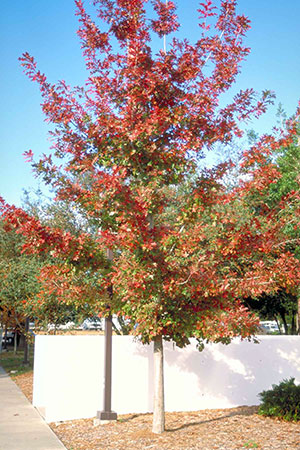
Shumard oak showing off its fall colors. Photo courtesy UF/IFAS.
As the plant enters endo-dormancy, it tracks chilling hours to chart the passage of the winter. Chilling hours are the time when temperatures drop below 45 degrees Fahrenheit. The number of hours required for chilling varies for different plants. Many people think the plant is tracking hours below freezing. However, hours below freezing have no effect on chilling, but will increase cold hardiness. If warm weather occurs before the plant completes its chilling requirement, no growth occurs. Chilling and endo-dormancy normally prevent plants from beginning growth during warm spells in the middle of the winter. Not all hours above freezing are equal. Temperatures between 35 and 45 degrees Fahrenheit seem to be most effective. Temperatures just above freezing and above 50 F are less effective and temperatures above 60 F often have a negative effect on chilling.
After a plant has checked off its chilling hours it is no longer in a state of endo-dormancy. It is now in eco-dormancy. The plants are dormant only because of cold temperatures. Warmer weather will cause plants to yawn, make that final stretch, and begin to grow. Growth first becomes apparent when buds swell and then green tissue emerges from the bud. However, plants actually begin growing before we notice their swelling buds. So this winter when your plants start to shed their leaves don’t be frightened, they may just be taking a much deserved rest in preparation for a brilliant show come spring.
Please contact your local extension office for more information.
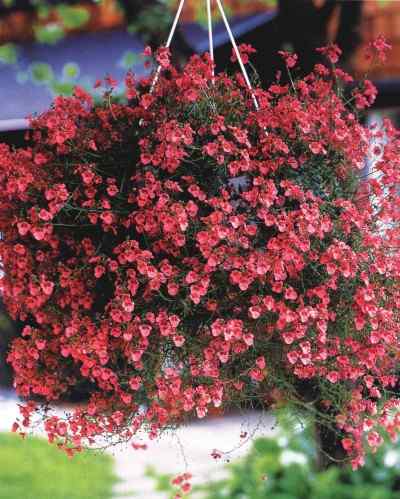
by Sheila Dunning | Nov 4, 2014
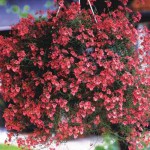 Since 2005, multiple varieties of Diascia have added to the U.S. fall market of winter flowering plants. Its delicate flowers are far from ordinary though. In the early part of the last century most British gardening encyclopedias listed just one diascia – Diascia barberae – derived from seed collected by Col. J. H. Bowker and sent by Mrs. Barber to Kew Gardens, England, in 1870. Annual and perennial diascias had, of course, already been discovered and classified by several botanists visiting South Africa much earlier. The dainty, little annual, Diascia barberae, is not a very showy flower, but one which will appeal to the true flower lover. The flowers are rosy pink with yellow-green spots in the throat. The flowers are lipped, being related to the Snapdragons, but have two spurs on the lower lips, and are sometimes called twinspur. It was not until John Kelly was given a plant called Diascia cordata by Edrom Nurseries in 1971 that anything notable happened to diascias again. He took pollen from his Diascia cordata and applied it to one flower of Diascia barberae. Of the nine seeds he obtained, just one was worthy of attention. He named it Diascia ‘Ruby Field’ (not for the color of the flowers, but for a lady who devoted her live to the long-term care of deprived children). Despite the popularity of this new, hardy hybrid, little more happened with diascias for yet another decade. The boom in the diascia trade began only recently. Today’s diascia offers larger flowers, larger plants with a more open growth habit and colors ranging from scarlet through salmon and coral into pink. They bloom throughout the cooler weather and may behave as a perennial in warmer sites. But, the uniqueness of their flower structure and ecological role are as fascinating as the flower is beautiful.
Since 2005, multiple varieties of Diascia have added to the U.S. fall market of winter flowering plants. Its delicate flowers are far from ordinary though. In the early part of the last century most British gardening encyclopedias listed just one diascia – Diascia barberae – derived from seed collected by Col. J. H. Bowker and sent by Mrs. Barber to Kew Gardens, England, in 1870. Annual and perennial diascias had, of course, already been discovered and classified by several botanists visiting South Africa much earlier. The dainty, little annual, Diascia barberae, is not a very showy flower, but one which will appeal to the true flower lover. The flowers are rosy pink with yellow-green spots in the throat. The flowers are lipped, being related to the Snapdragons, but have two spurs on the lower lips, and are sometimes called twinspur. It was not until John Kelly was given a plant called Diascia cordata by Edrom Nurseries in 1971 that anything notable happened to diascias again. He took pollen from his Diascia cordata and applied it to one flower of Diascia barberae. Of the nine seeds he obtained, just one was worthy of attention. He named it Diascia ‘Ruby Field’ (not for the color of the flowers, but for a lady who devoted her live to the long-term care of deprived children). Despite the popularity of this new, hardy hybrid, little more happened with diascias for yet another decade. The boom in the diascia trade began only recently. Today’s diascia offers larger flowers, larger plants with a more open growth habit and colors ranging from scarlet through salmon and coral into pink. They bloom throughout the cooler weather and may behave as a perennial in warmer sites. But, the uniqueness of their flower structure and ecological role are as fascinating as the flower is beautiful. 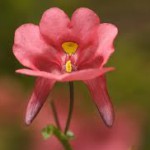 The common name of twinspur refers to the two downwardly pointing spurs found on the back of the flower. The spurs contain an oil which is collected in the South Africa wild by Rediviva bees. The female bees have unusually long, hairy forelegs that are used to collect the oil to feed her larvae. However, the Greek origin of the Diascia name doesn’t refer to the spurs, but rather the two sacs found in the upper part of the corolla. The flower petals help the bees to
The common name of twinspur refers to the two downwardly pointing spurs found on the back of the flower. The spurs contain an oil which is collected in the South Africa wild by Rediviva bees. The female bees have unusually long, hairy forelegs that are used to collect the oil to feed her larvae. However, the Greek origin of the Diascia name doesn’t refer to the spurs, but rather the two sacs found in the upper part of the corolla. The flower petals help the bees to  orient themselves to the oil glands of the spurs. While North Florida isn’t home to the Rediviva bee, we can grow Diascia and it is a wonderful opportunity to show the unique connection insects and plants can have. Look for other specialized flower structures and you will find other animals that fit them perfectly, even within the species found in the Panhandle.
orient themselves to the oil glands of the spurs. While North Florida isn’t home to the Rediviva bee, we can grow Diascia and it is a wonderful opportunity to show the unique connection insects and plants can have. Look for other specialized flower structures and you will find other animals that fit them perfectly, even within the species found in the Panhandle.
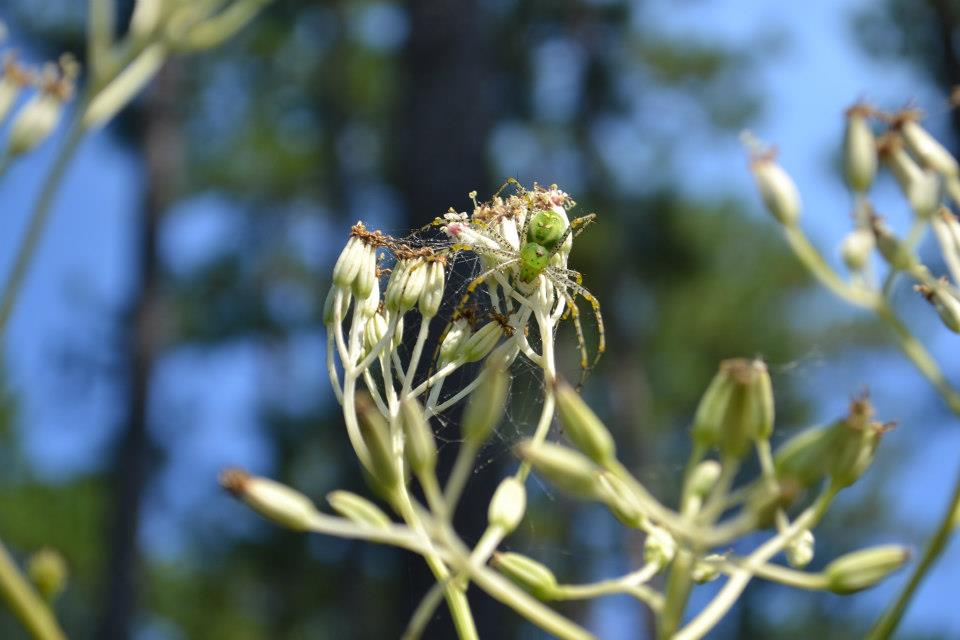
by Beth Bolles | Nov 4, 2014
Take a walk through the garden or woods this fall and you are sure to pass by a Green lynx spider. Unless you are very observant though, you will probably not realize that this common spider is perched upon flowers and low shrubs, ready to catch an insect meal.
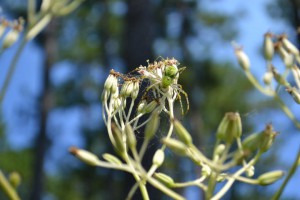
An adult spider blends in well with plants. Photo by Beth Bolles, Escambia County Extension
Even though Green lynx spiders are very large, they are often well camouflaged in plant material. Spiders are bright green with a lighter color on the abdomen including some small red markings. The legs have distinctive black spines.
This spider does not spin a web but actively hunts insects using a dragline as it quickly moves or jumps over plants. It is an opportunistic feeder catching many types of insects that are visiting flowers. It has been noted as an important predator of some crop damaging insects.
Females will normally lay one egg sac in the fall and guard it from predators. It is constructed in the upper portions of branches and has webbing connecting it to nearby plant leaves. This webbing becomes a protective area for the emerged spiderlings until they are able to take care of themselves.
Lynx spiders pose no harm to people and should be considered one of many beneficial arthropods that we see in Florida.
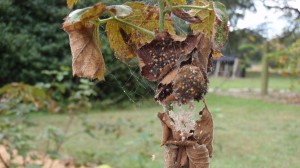
Young spiderlings on a blackberry guarded by the adult. Photo by Beth Bolles, Escambia Extension
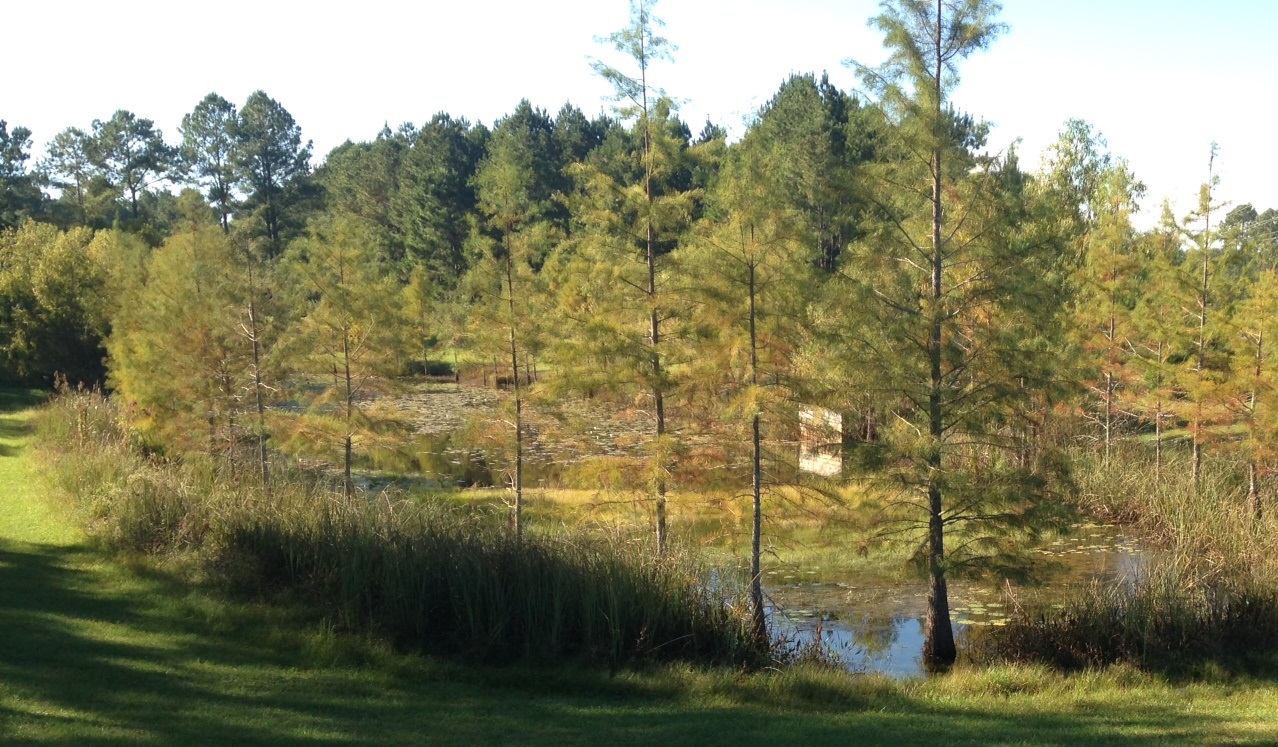
by Carrie Stevenson | Nov 4, 2014
I recently met with a group of community volunteers who are interested in providing more butterfly habitat in our public areas. Monarchs migrating to Mexico this time of year use northwest Florida as a stopover and feeding site, but if host plants are unavailable they cannot sustain a healthy population. In addition, Gulf fritillaries, buckeyes, and swallowtails are spending time in local butterfly gardens, feeding on passion vine, butterfly bush, milkweed, and more.
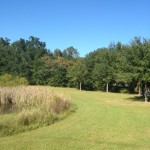
The grassy area between this stormwater pond and woods is an ideal location for a butterfly garden. Willows growing along the edge attract butterflies already. Photo credit: Carrie Stevenson
The volunteers and several county staff visited three publicly-managed stormwater ponds, which are an ideal setting for what some proponents term “Butterflyscaping.” The open space, water source, and diversity of plants along the edge of the ponds lend themselves well to wildlife habitat.
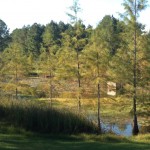
The permanently wet detention pond lined with cypress trees and sawgrass also provides habitat for fish, birds, and reptiles. Photo credit: Carrie Stevenson
When considering adding vegetation to a neighborhood common area, there are several things to consider. First is maintenance. If there’s an annual contract with a landscaping company to mow or maintain an area, you’ll want to have a discussion about excluding the new planting area from mowing to establish new vegetation. You’ll also want to look at the soil and amount of sunlight to determine the best plant choices for the area.
A variety of groundcovers, flowering plants, shrubs and small trees will typically provide food for both caterpillars and adult butterflies. Once established, these new landscape additions will not only provide habitat and color, but may end up reducing maintenance costs as well.
For more information, the UF publication “Community Butterflyscaping” is an excellent resource for landscape design, plant choices, and practical steps toward getting started with a neighborhood or schoolyard project.















